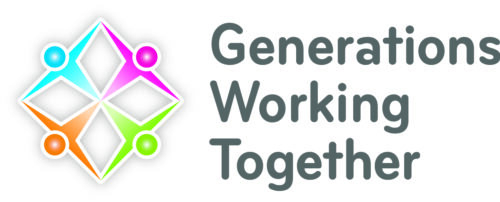
Social connections are essential for our health. They help us to make healthy decisions, inspire us to support one another, encourage us to be active, keep us mentally stimulated, and crucially, allow us to build and maintain trusting, cohesive communities. Encouragingly, the impact of social factors upon health, mental and physical, are increasingly widely reported and well understood[1]. The growing prevalence of social prescribing programmes and Community Link Workers (CLWs) within primary care settings are evidence of this. Their value cannot be understated in producing positive health outcomes for patients dealing with complex non-medical issues; both on an individual level, and from a wider public health perspective. At Generations Working Together, our experience supporting those working in communities tells us that intergenerational practice improves social connectedness, and thus helps address health inequalities. We therefore want to support the amazing work that CLWs are already doing, supporting them to improve their knowledge of intergenerational practice and linking them with our networks around Scotland.
Intergenerational practice (IP) brings people together in purposeful, mutually beneficial activities which promote greater understanding and respect between generations.[2] Intergenerational projects focus on diverse topics and activities depending on participants interests and needs. These can range, from life-skills projects to numeracy/literacy exercises, to cooking and even boat building! The benefits of intergenerational activities vary from project to project; it may be learning to work with wood, learning to make soup, improving educational attainment. But what really defines intergenerational practice, are the wider, less tangible, but arguably more important benefits that all participants derive from the relationships that are built:
- improved confidence across ages
- increased trust, respect and self-esteem
- reduced loneliness and social isolation
- the building of meaningful and lasting intergenerational relationships
- a sense of social and community responsibility
- the breakdown of age-related stereotypes in all ages[3]
These are all invaluable outcomes that are consistently reported by participants who engage in intergenerational projects. One of the most wonderful things about intergenerational work is that it rarely stays contained in the space in which it takes place – connections and relationships made there follow people home and spread throughout communities.
Opportunities for intergenerational connections lie in the coexistence of people of all ages, which are everywhere and a major asset of so many communities. However, post-industrial changes to traditional community settings amongst other socio-political factors have resulted in a growing cultural wall between younger and older generations. This goes against our very instincts as social beings and is a driver of poor health outcomes. It’s essential therefore, that we do everything in our power to reestablish these connections, from both a social and a public health perspective.
The evidence base for the value of intergenerational practice is growing. The World Health Organisation (2023) identifies intergenerational activity as a proven and indeed essential way to reduce ageism[4]. The same report finds that ageism can reduce life expectancy by up to 7.5 years, demonstrating its need for attention as a public health issue. Several reports also emphasise the value of intergenerational connections in combatting loneliness, which we know is inextricably linked to a number of mental and physical illnesses such as depression, anxiety and poor cardiovascular health, which also contribute to reduced life expectancy. Research has shown that the effect of loneliness has the equivalent health impact of smoking 15 cigarettes a day[5]. The impact of loneliness is reflected in GP visits, with people experiencing loneliness making more GP visits compared with people who aren’t lonely. One study reports that three out of four GPs say they see between 1 and 5 people a day who have come in mainly because they are lonely[6]. Social connections are a vital public health determinant, and intergenerational relationships can provide that connection, whilst also providing a range of other benefits.
We encourage Community Link Workers supporting patients dealing with complex, non-medical issues within their local communities, to learn more about intergenerational practice and identify its potential to assist them in their work, maximising the value of intergenerational connections for their patients. Consider Generations Working Together’s training opportunities – from short online modules to one day courses and more. GWT runs 18 local networks across Scotland. By joining GWT (for free) and signing up to their local network, CLWs can find out about intergenerational projects running in their own area and explore the possibility of signposting patients. GWT also has a rich resource library.
For contact details and to learn more about our work, please visit www.gwt.scot.
Ruairidh Smith is the Policy Officer with Generations Working Together


[1] Data, Social Determinants, and Better Decision-making for Health: the 3-D Commission – PMC (nih.gov)
[2] Intergenerational Working – Beth Johnson Foundation (bjf.org.uk)
[3] What is intergenerational practice? (generationsworkingtogether.org)
[4] Connecting generations: planning and implementing interventions for intergenerational contact (who.int)
[5] Loneliness and social isolation as risk factors for mortality: a meta-analytic review – PubMed (nih.gov)
[6] Tackling Loneliness – A Community Action Plan, Scotland (rcgp.org.uk)
